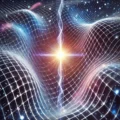Planck’s Constant as the Maximum EM Frequency Limit
Planck’s primary contribution was to demonstrate that there is a limit on the smallest wavelength of mechanical radiation that can be propagated, detected, or converted to work energy. He introduced the concept of energy quantization through his constant ℎ, establishing that at high frequencies, the energy emitted or absorbed by blackbody radiation correlates with frequency in a way that suggests discrete energy changes. However, this does not inherently imply that energy exists in discrete multiples or clumps; rather, it indicates a fundamental limit on the wavelengths of radiation that can be observed or utilized.
Planck’s work effectively demonstrated that there is a maximum frequency at which electromagnetic energy can be emitted or detected. This establishes a boundary condition for electromagnetic radiation, which is directly related to the characteristics of the oscillating charges that produce the radiation.
While Planck’s work established a limit to the frequency of electromagnetic radiation, it did not suggest or prove the existence of quantization in terms of discrete energy packets (quanta) of electromagnetic radiation.
His findings indicate that there are fundamental limits to how energy can propagate, but they do not directly dictate the structural nature of energy within atoms or molecules.
Bamboozle: Planck’s energy is not EM energy and this set us up for misunderstandings about EM energy
Planck’s energy—E=hf —gets paraded as the poster child of electromagnetic glory, a pristine quanta of light born from oscillating charges in a blackbody’s glow. But here’s the rub: it’s a mechanical mongrel dressed in EM silk. That ( f ) —frequency—springs from heat, from atoms banging in a lattice, a chaotic rumble of friction masquerading as pure EM waves. Science swallowed the half-truth whole, assuming charges waltz alone, while the mechanical muck—entropy’s thud—got swept under the rug. This bamboozle birthed a century of EM missteps: we pinned light’s essence on Planck’s glow, ignoring the gritty lattice that fueled it, setting us up to flub redshift, tired light, and the cosmos itself. Peer review nods to the EM myth, funding flows to polish the halo, and the mechanical truth—energy’s messy dance—rots in the shadows, starving breakthroughs for a cleaner lie.
“Truth is not a gift bestowed upon us; it’s a garden cultivated through relentless doubt.” — Max Planck
We’ve been bamboozled into worshipping EM’s gleam, blind to the mechanical beast beneath. Planck’s energy isn’t light’s pure song—it’s a hybrid howl, and that half-truth has us chasing photons while the lattice laughs.
